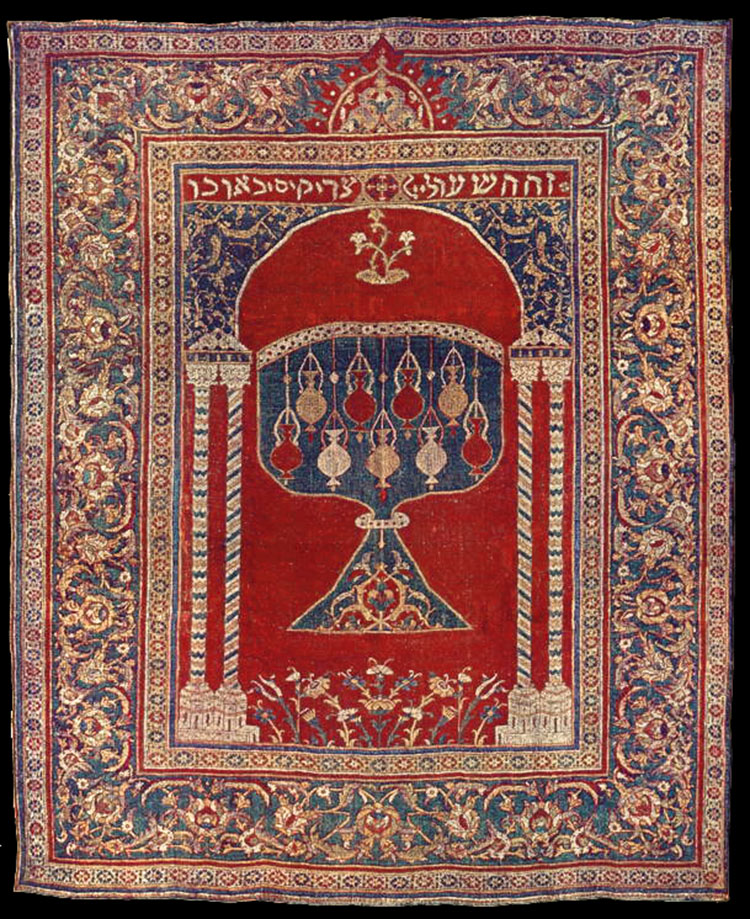Cairene Ottoman Parokhet or Torah Curtain rug,with a Hebrew
Inscription from Psalm 118: "This is the Gate of the Lord through
which the righteous enter". Textile Museum
Torah curtains were used to cover the ark or case in which the
Torah or biblical scrolls were kept in synagogues. This Torah
curtain reflects a well-known type of Ottoman court prayer rug or
sajjadah, with a single arch supported by decorated single or
coupled columns with faceted bases that appear to be rendered in
perspective. The central motif is a menorah in the form of a
chalice decorated with nine hanging lamps. In a panel above the
arch is a Hebrew inscription from the book of Psalms CXVIII:20: --
"This is the Gate of the Lord: Through it the Righteous Enter."
Elements of Ottoman court design and architecture, Ottoman
adaptations of Egyptian dyeing and weaving techniques, Islamic
iconography, Italian one-point perspective, and adaptations of
Spanish Islamic architectural forms, all came together to form a
classical prototype for literally hundreds of Anatolian prayer
rugs and Torah curtains over the subsequent centuries.
The
Textile Museum R16.4.4
Acquired by George Hewitt Myers in 1915

Picture courtesy: John Taylor,
rugtracker.com

